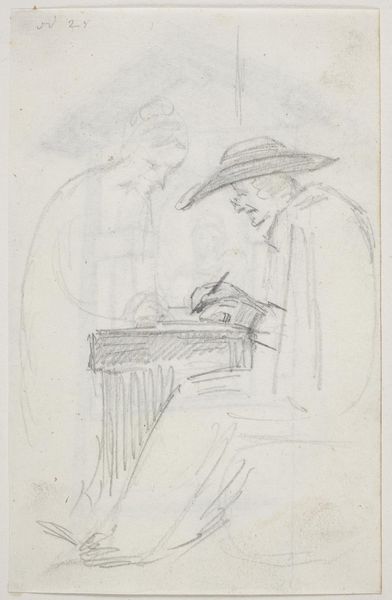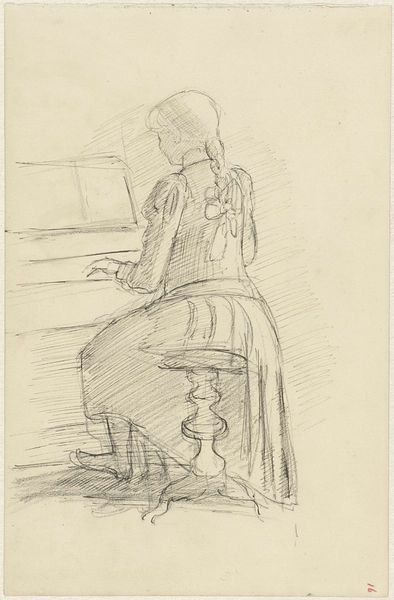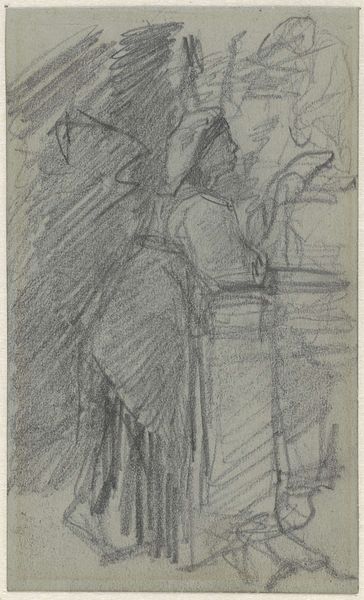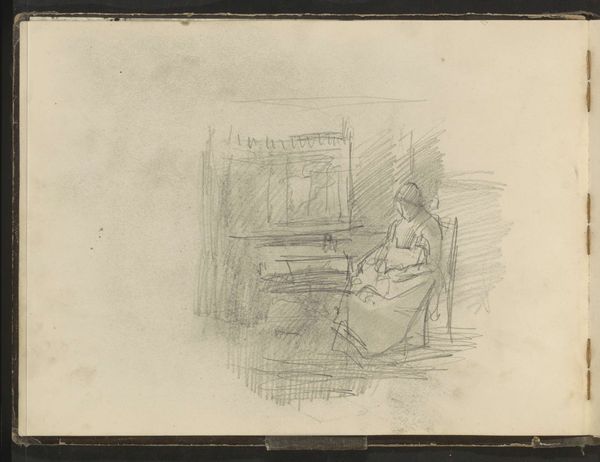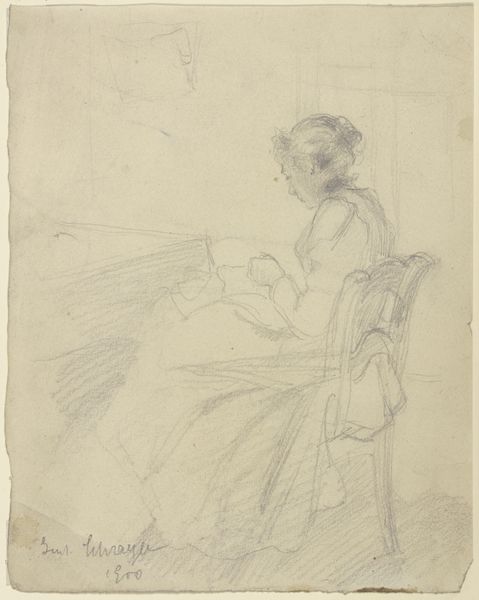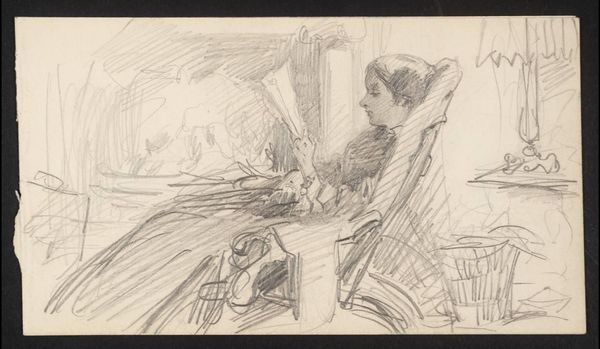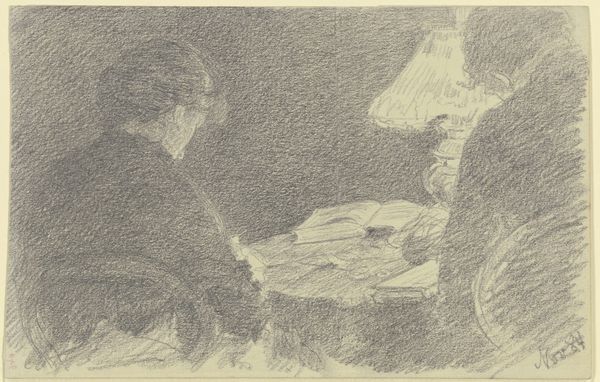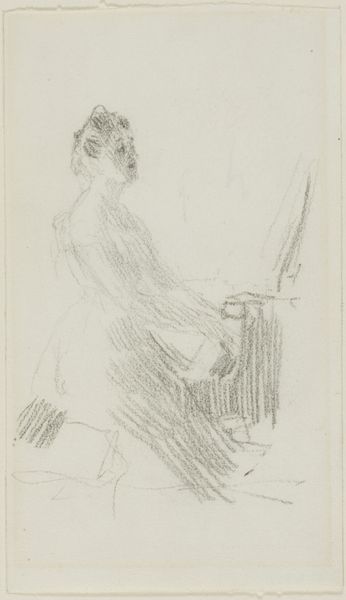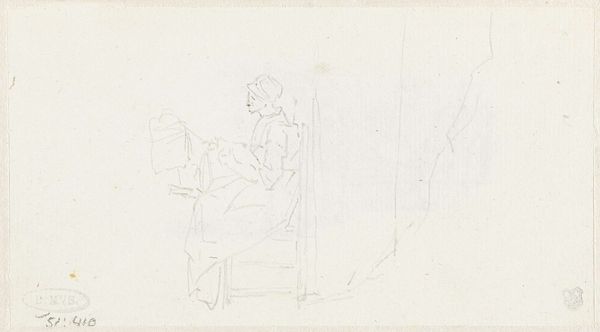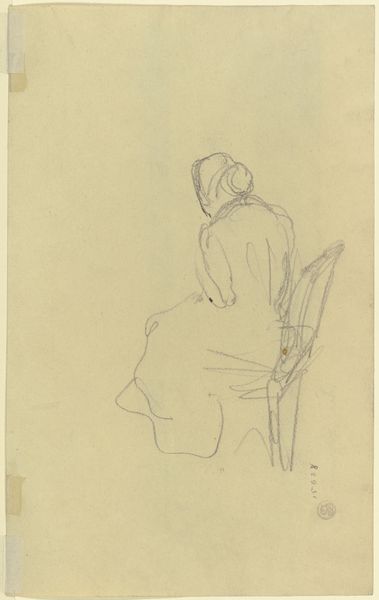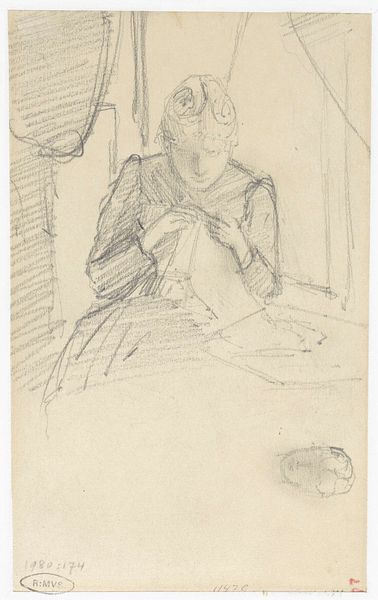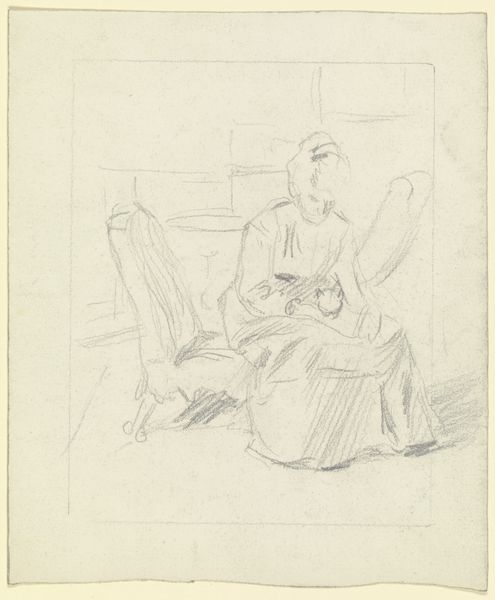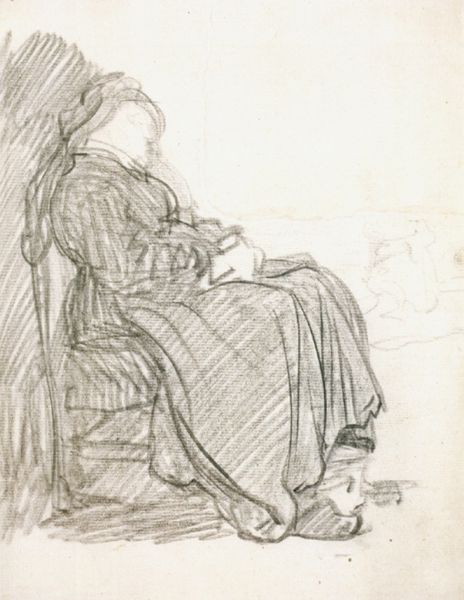
drawing, pencil
#
portrait
#
drawing
#
amateur sketch
#
light pencil work
#
pen sketch
#
pencil sketch
#
personal sketchbook
#
ink drawing experimentation
#
pen-ink sketch
#
pencil
#
sketchbook drawing
#
genre-painting
#
sketchbook art
#
rococo
#
initial sketch
Dimensions: height 295 mm, width 215 mm
Copyright: Rijks Museum: Open Domain
Editor: Here we have Cornelis Troost's "Two Studies of a Seated Man, in Profile to the Right," dating from 1738. It's a pencil drawing, and it strikes me as quite informal, almost like a quick study. What catches your eye in this piece? Curator: What I see is a window into the artistic process of the 18th century, particularly within the Rococo period. Consider the function of academies at this time, and the rise of art criticism in places like the Parisian Salons. How might this informal sketch, likely from Troost’s personal sketchbook, speak to the evolving role of the artist in society? Editor: So, less about a finished product and more about artistic development? Curator: Precisely. Troost, though a celebrated artist in his time, wasn't necessarily creating for public consumption with every stroke. This sketch provides an intimate view, one that defies the grand narratives of commissioned portraiture so common amongst the aristocracy of his time. Do you see echoes of these larger trends here, perhaps subverted in Troost's style? Editor: Well, the Rococo period had this sense of lightness and playfulness, and the sketch definitely feels more casual than a formal portrait, a sort of 'behind-the-scenes' glimpse. Curator: Exactly! Now, think about the audience for these types of sketches versus the grand portraits meant for public display. How might the politics of imagery shift depending on the intended viewer and the space it occupies? Editor: I hadn’t considered how the very act of sketching becomes a social statement in its own way. Thank you, that’s given me a new way to see it. Curator: And for me, reflecting on these aspects reminds us that art’s public role has always been complex. There is production of official art, of course, but artists engage with and respond to sociopolitical dynamics in ways that reflect shifting power structures of imagery itself.
Comments
No comments
Be the first to comment and join the conversation on the ultimate creative platform.
